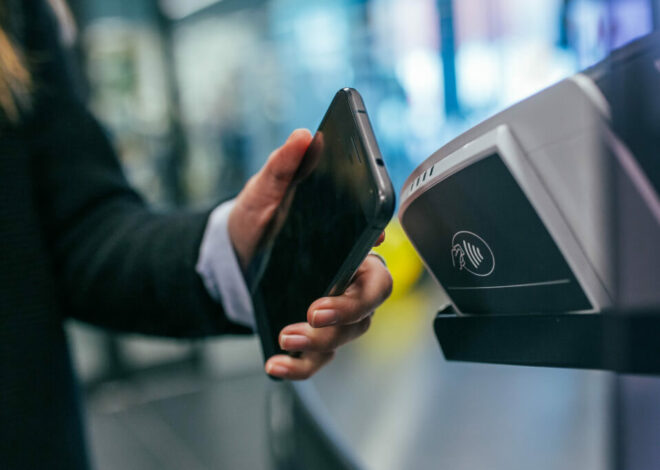
Mobile Parental Controls
Gone are the days when a child’s first word might be ‘mama’ or ‘dada’. Today, it wouldn’t be too surprising if it was ‘tablet’. Kids are becoming tech-savvy at an impressively young age. While this early exposure to technology offers countless learning opportunities, it also opens up avenues of risks and threats. This is where parental controls step in, ensuring that while your little one enjoys the perks of the digital age, they’re also shielded from its darker corners.
Guardians of the Digital Playground
The digital age has brought about an era of unprecedented connectivity and accessibility. It’s a time of boundless information where a universe of knowledge is right at your fingertips. However, like all expansive realms, the online space has its dark corners, making it essential to set up safeguards for our most vulnerable—our kids. Let’s explore the critical reasons why parental controls are not just an option, but a necessity.
Navigating Vast and Varied Territories
The online sphere is like an endless city. While there are libraries, educational institutions, and parks, there are also alleyways you wouldn’t want your child wandering into. The lack of tangible borders online can often mislead kids into these unsavory zones. By configuring the right settings, parental controls act as digital signposts, pointing your child towards safe and enlightening destinations while detouring them away from harmful ones.
Combatting the Menace of Cyberbullying
The days when bullies were confined to schoolyards are long gone. Today, they lurk behind screens, casting their toxic nets far and wide. It’s reported that over 59% of U.S. teens have experienced some form of cyberbullying. Parental controls can help monitor and restrict communication with potential bullies, ensuring your child’s online interactions remain positive and respectful.
Shielding from Inappropriate Content
A simple search can sometimes lead to unexpected results. What might start as an innocent query can lead to a cascade of inappropriate content. Parental controls provide a necessary filter, ensuring search results align with age-appropriate content and shielding young eyes from premature exposure.
Thwarting Online Predators
A more sinister threat in the digital age is the presence of online predators. These individuals can masquerade as harmless peers, exploiting platforms popular with kids to make contact. Parental controls allow you to monitor and limit interactions, ensuring your child’s conversations are limited to known friends and family.
Empowering Safe Exploration
Envision parental controls as the training wheels on a bicycle. They provide the balance and assurance kids need when first navigating the online world. With these controls in place, your child learns the dynamics of the digital realm—what’s beneficial, what’s harmful, and how to differentiate between the two. Over time, as they grow and understand the landscape better, they can pedal freely with the knowledge and tools to protect themselves.
The beauty of the internet lies in its ability to educate, entertain, and enlighten. By implementing parental controls, we’re not restricting our children; instead, we’re empowering them to enjoy the best of the digital world, safely and smartly.
Top Apps that Have Got Your Back
Several apps have made it their mission to make the online world more accessible and safer for children. Some top picks include:
Norton Family: This app helps you monitor your child’s online activities. It offers web filtering, time supervision, and instant lock capabilities. So, if your kid’s spending too much time on a particular app, you can set limits.
Qustodio: This software’s strength lies in its detailed activity reports. You’ll know exactly what apps and sites your kids favor, helping you guide their digital habits.
Net Nanny: Especially known for its robust content filtering, it ensures your child only sees age-appropriate content. Plus, with app management and time usage controls, it’s a comprehensive tool for parents.
Remember, these tools are not about spying on your child. Instead, they’re about fostering a safe environment where young minds can explore, learn, and grow.
Crafting a Kid-Friendly Mobile

So, you’ve decided to hand over a smartphone to your child. Before you do, here are some steps to ensure it’s primed for young users:
Built-in Settings: Modern smartphones come with built-in parental controls. Dive into your phone’s settings. Here, you can restrict app installations, in-app purchases, and access to explicit content.
Safe Search: Turn on safe search settings in browsers and YouTube. This simple step can filter out a significant portion of unsuitable content.
Limited Screen Time: Too much screen time isn’t great for developing eyes (or minds). Use apps or in-built phone settings to establish healthy boundaries.
Educate: Lastly, but most crucially, have a chat with your child. Explain the basics of online safety, the importance of not sharing personal information, and encourage them to come to you with any issues or questions.
Safeguarding Tomorrow’s Digital Navigators
In the vast, interconnected tapestry of the digital age, our children stand as eager explorers on the precipice of discovery. The online sphere offers them unprecedented opportunities—to learn, connect, and grow. However, with every vast ocean comes its lurking predators and hidden dangers. It’s our duty, as parents, guardians, and caregivers, to ensure that as they set sail on this vast digital ocean, they’re equipped with the best navigational tools available.
Parental controls are more than just digital barriers; they’re tools of empowerment. By guiding our young ones towards positive interactions and away from potential threats, we’re teaching them the critical life skill of discernment. The internet, after all, is but a reflection of our world—filled with both wonders and woes. And just as we teach our children to cross the street safely or avoid speaking to strangers, we must guide them in navigating the online world.
It’s essential to remember, though, that as our kids grow, the training wheels must come off. Our end goal is to nurture confident digital citizens who can make wise choices autonomously. The structured guidance that parental controls provide lays the groundwork for this independence. It helps our children develop a sense of responsibility and awareness that will serve them well in their digital endeavors and beyond.
The beauty of today’s technological landscape lies in its fluidity and ever-evolving nature. As new challenges arise, so do solutions. And while no tool or app can replace open dialogue and guidance, parental controls play a pivotal role in complementing our efforts. They’re our allies in ensuring that our kids’ online experiences are as enriching, enlightening, and—most importantly—as safe as possible.



